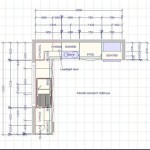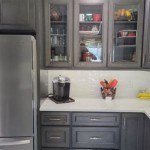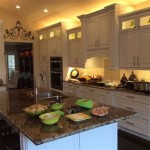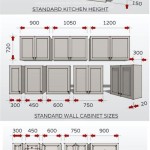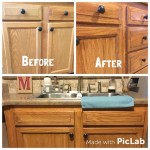What Is The Most Popular Kitchen Hardware?
The selection of kitchen hardware is a critical aspect of kitchen design, influencing both the aesthetic appeal and the functionality of the space. While trends fluctuate, certain types of hardware consistently maintain popularity due to their versatility, durability, and ability to complement a wide range of kitchen styles. Identifying the "most popular" kitchen hardware necessitates analyzing various factors, including material preferences, style trends, finish options, and their prevalence within both residential and commercial settings.
Kitchen hardware encompasses a broad category of components, primarily referring to cabinet knobs, pulls, hinges, and drawer slides. These elements, though seemingly small, play a significant role in the overall usability and visual character of the kitchen. The choice of hardware can either blend seamlessly with the surrounding cabinetry or serve as a contrasting accent, contributing to the kitchen's unique design identity.
The ongoing popularity of specific kitchen hardware is influenced by broader design trends, shifting consumer preferences, and advances in manufacturing techniques. Examining these factors provides a comprehensive understanding of why certain types of hardware remain consistently in demand.
Analyzing Material Preferences in Kitchen Hardware
The material composition of kitchen hardware is a fundamental consideration, impacting its durability, aesthetic properties, and overall cost. Several materials are commonly employed, each possessing distinct characteristics. Determining the most popular material involves evaluating its usage frequency and consumer satisfaction.
Stainless steel consistently ranks as a highly favored material for kitchen hardware. Its resistance to corrosion, durability, and relatively low maintenance requirements contribute to its widespread adoption. Stainless steel offers a clean, modern aesthetic that complements various kitchen styles, from contemporary to transitional. The inherent neutrality of stainless steel allows it to integrate seamlessly with diverse cabinet colors and countertop materials.
Brass, particularly in brushed or antique finishes, also maintains a significant presence in the kitchen hardware market. Brass offers a warmer, more traditional aesthetic compared to stainless steel, often chosen for its ability to add a touch of elegance and sophistication. The inherent antimicrobial properties of brass further enhance its appeal, particularly in a kitchen environment where hygiene is paramount. However, brass is typically more expensive than stainless steel and might require more diligent cleaning to prevent tarnishing, depending on the finish.
Zinc alloys are a commonly used and cost-effective alternative to stainless steel and brass. Zinc alloys can be cast into various shapes and designs, providing greater flexibility in hardware styles. Finishes such as brushed nickel, oil-rubbed bronze, and matte black are frequently applied to zinc alloy hardware, broadening its aesthetic versatility. While zinc alloys are generally durable, they may not possess the same level of corrosion resistance as stainless steel, particularly in environments with high humidity or exposure to harsh cleaning chemicals.
Other materials, such as ceramic, glass, and wood, are also utilized in kitchen hardware, albeit to a lesser extent. These materials are often incorporated to create unique, customized designs that reflect specific aesthetic preferences. Ceramic and glass hardware can add a touch of color and visual interest, while wooden hardware can provide a natural, organic feel. However, these materials may require more careful handling and maintenance compared to metal options.
Examining Style Trends in Kitchen Hardware Design
The style of kitchen hardware plays a crucial role in defining the overall aesthetic of the kitchen. Trends in kitchen design constantly evolve, influencing the popularity of specific hardware styles. The most popular styles often reflect current design philosophies, prioritizing either minimalist simplicity or ornate detail.
Modern, minimalist hardware designs are consistently in demand. These designs typically feature clean lines, simple shapes, and a focus on functionality. Bar pulls, characterized by their elongated, rectangular form, are a prime example of minimalist hardware. Their unobtrusive design allows them to blend seamlessly with modern cabinetry, emphasizing the overall clean aesthetic of the kitchen.
Transitional hardware styles, bridging the gap between traditional and modern designs, also enjoy widespread popularity. These styles often incorporate elements of both aesthetics, such as a combination of curved and straight lines. Cup pulls, reminiscent of vintage designs but updated with sleek finishes, are a popular choice for transitional kitchens. Their subtle detailing adds a touch of character without overwhelming the overall design.
Traditional hardware styles, characterized by ornate detailing and classic forms, continue to appeal to homeowners seeking a more formal or elegant kitchen aesthetic. Knobs with intricate carvings, antique finishes, and vintage-inspired designs are often chosen for traditional kitchens. While traditional styles may not be as prevalent as modern or transitional styles, they maintain a dedicated following due to their timeless appeal.
Increasingly, there is a trend towards incorporating unique and personalized hardware designs. This trend reflects a desire for individuality and customization in kitchen design. Hardware featuring unusual materials, textures, or shapes is becoming more popular as homeowners seek to create kitchens that reflect their personal style. This includes custom-made hardware or those 3D printed.
Analyzing Finish Options and Their Impact on Popularity
The finish applied to kitchen hardware significantly impacts its appearance and perceived value. The choice of finish can either complement the surrounding cabinetry and countertops or provide a contrasting accent. Several finish options are commonly available, each offering a distinct aesthetic. The popularity of specific finishes is influenced by current design trends and consumer preferences.
Brushed nickel remains a consistently popular finish choice for kitchen hardware. Its subtle sheen and neutral tone make it a versatile option that complements a wide range of cabinet colors and styles. Brushed nickel is also relatively easy to maintain, resisting fingerprints and water spots compared to polished finishes.
Matte black has experienced a surge in popularity in recent years, becoming a dominant trend in kitchen hardware finishes. Its bold, dramatic appearance adds a touch of modern sophistication to any kitchen. Matte black hardware is particularly effective in contrasting with light-colored cabinetry, creating a striking visual impact. However, matte black finishes may be more prone to showing scratches and fingerprints.
Oil-rubbed bronze offers a warmer, more traditional aesthetic compared to brushed nickel or matte black. Its dark, rich color and textured surface add a touch of elegance and character to kitchens with traditional or transitional designs. Oil-rubbed bronze is often chosen for its ability to create a sense of warmth and sophistication.
Polished chrome offers a bright, reflective finish that adds a touch of sparkle to the kitchen. While less popular than brushed nickel or matte black, polished chrome remains a viable option for modern kitchens seeking a sleek, contemporary aesthetic. However, polished chrome finishes can be more susceptible to fingerprints and water spots, requiring more frequent cleaning.
Gold finishes, including brushed gold and polished brass, are also gaining popularity as homeowners seek to add a touch of luxury and glamour to their kitchens. Gold finishes are particularly effective in complementing dark-colored cabinetry, creating a sophisticated and opulent look.
Ultimately, the "most popular" kitchen hardware is not a static designation. The preferences of consumers change and styles evolve. However, stainless steel materials, minimalist hardware design, transitional designs, and matte black or brushed nickel finishes are consistently mentioned. The factors that contribute to the popularity of specific hardware elements are its versatility, durability, compatibility with other materials, and overall style.

The 16 Most Popular Knobs And Pulls For Kitchens

Best Hardware For White Shaker Cabinets Lily Ann

Best Kitchen Cabinet Hardware 2024

Kitchen Hardware Trends 2024 Jenna Kate At Home

What Is The Most Popular Kitchen Cabinet Handle Feelswarm

13 Kitchen Hardware Trends For 2024 The Flooring Girl

Best Kitchen Cabinet Hardware 2024

What Is The Most Popular Kitchen Cabinet Handle Feelswarm

10 Key Kitchen Hardware Trends For 2024 Lily Ann Cabinets

Top 13 Kitchen Cabinet Hardware Ideas In 2024
Related Posts



